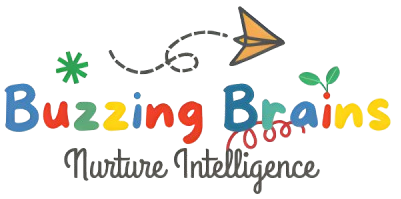Developing Hand-Eye Coordination in Children: Why it Matters
Hand-eye coordination is the ability to track objects with your eyes and react with your hands or body. It’s a crucial skill that affects various aspects of a child’s life, from academics to sports.
What is Hand-Eye Coordination?
Hand-eye coordination involves the combination of visual, motor, and cognitive skills. It requires the eyes to send signals to the brain, which then sends signals to the hands or body to react. This complex process enables children to perform various tasks, such as catching a ball, writing, or using utensils.
Why is Hand-Eye Coordination Important?
Developing hand-eye coordination is essential for children’s overall development. It:
– Improves sports performance: Hand-eye coordination is critical for sports that involve catching, throwing, or hitting objects, such as basketball, tennis, or cricket.
– Enhances fine motor skills: Hand-eye coordination helps children develop precise movements, enabling them to perform tasks like writing, drawing, and using small objects.
– Boosts confidence: Developing hand-eye coordination can enhance a child’s self-esteem and confidence, encouraging them to participate in various activities.
– Supports academic success: Hand-eye coordination is linked to better performance in reading, writing, and math.
Benefits of Hand-Eye Coordination
Developing hand-eye coordination offers numerous benefits, including:
– Better performance in sports and physical activities
– Increased academic achievement and confidence
– Improved dexterity and fine motor skills
– Enhanced reaction time and spatial awareness
– Improved overall coordination and balance
Repercussions of Not Having Hand-Eye Coordination
- Delayed motor skills development: Children may struggle with tasks like catching, throwing, or kicking a ball.
- Difficulty with daily activities: Simple tasks like dressing, feeding, or using utensils may become challenging.
- Increased frustration and low self-esteem: Children may feel frustrated or embarrassed by their inability to perform tasks, leading to low self-esteem.
- Potential impact on academic performance: Hand-eye coordination is essential for skills like writing, drawing, and using scissors.
Effects of Lack of Hand-Eye Coordination in Different Age Groups
2-5 years
- Delayed gross motor skills: Children may struggle with running, jumping, or kicking a ball.
- Difficulty with fine motor skills: Tasks like using crayons, markers, or puzzles may be challenging.
- Increased reliance on others: Children may need assistance with daily activities, impacting independence.
5-8 years
- Struggles with team sports: Children may find it difficult to participate in team sports, leading to social isolation.
- Difficulty with handwriting and drawing: Hand-eye coordination is crucial for writing, drawing, and using scissors.
- Frustration with crafts and puzzles: Children may become frustrated with activities that require hand-eye coordination.
8+ years
- Impact on academic performance: Hand-eye coordination is essential for skills like writing, drawing, and using technology.
- Difficulty with extracurricular activities: Children may struggle with activities like sports, music, or art, leading to limited opportunities.
- Increased risk of injuries: Poor hand-eye coordination can lead to accidents and injuries, especially in sports or physical activities.
Activities to Develop Hand-Eye Coordination
Here are some fun and engaging activities to help develop hand-eye coordination in children:
– Sports and physical activities: Engaging in sports like basketball, tennis, or cricket can improve hand-eye coordination and overall physical fitness.
– Puzzles and playsets: Jigsaw puzzles, LEGO, and playsets like Magna-Tiles can enhance fine motor skills and hand-eye coordination.
– Ball games: Catching, throwing, and bouncing balls can help improve hand-eye coordination.
– Obstacle courses: Setting up obstacle courses with tunnels, cones, or balance beams can challenge hand-eye coordination and overall coordination.
Tips for Parents
As a parent, you can support your child’s hand-eye coordination development by:
– Providing opportunities for ball games and sports
– Encouraging physical activity and outdoor play
– Limiting screen time and promoting active play
– Engaging your child in puzzles and playsets
– Practicing hand-eye coordination exercises with your child
Conclusion
Hand-eye coordination is a vital skill that touches various aspects of a child’s life. By understanding its importance and incorporating activities that promote hand-eye coordination, parents can support their child’s overall development and success.
